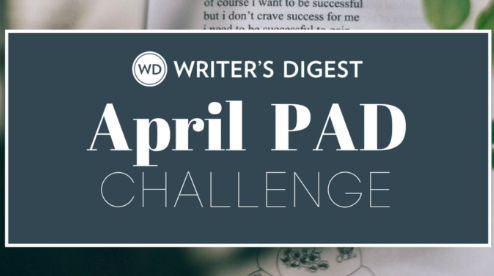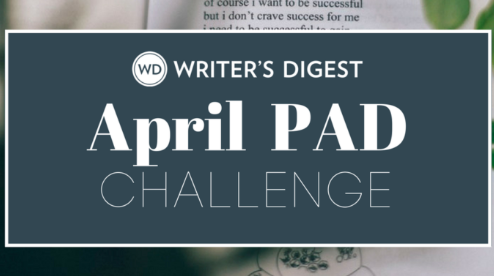Journey to a Debut Poetry Collection: 7 Resources for Poets
While Emily Stoddard assumed she was working on her poetry collection, she learned there was another step that had to be taken first. Here, she shares seven resources for poets on their journey to a debut poetry collection.
The journey to finishing my debut poetry book started with embarrassing myself. I was on Cape Cod to attend Marge Piercy’s poetry intensive. Before arriving, I had sent her some of my poems and a bio where I declared I was “at work on my first collection.”
This declaration mattered to me, because I was trying to reclaim my writing life after years of disruption: a divorce, working too much just to cover the bills, family issues that fried my creative instincts. That line in my bio was a promise to myself that I wasn’t just dabbling. I was here for the writing in a real way, and I was creating a genuine body of work, a soon-to-be book.
During my one-on-one meeting with Marge, she zeroed in on that line. “Your first collection—how many poems from it are already published?”
We were in the gazebo by her house, surrounded by her roses. It was a warm day, and getting warmer for me. I felt my face turn the flush-pink of finding out how naïve I am. At that point, maybe two poems had been published.
It wasn’t a collection yet, she explained. Not until I had published a good 40 percent or more of the poems would I be on my way to a genuine body of work, a soon-to-be book.
This was news to me, and you’d better believe my bio was revised that same day. Instead of a public declaration, I made a new, private promise: I would just work on the poems, meeting each one as it came. I would find good homes for them in literary magazines, poem by poem. I would loosen my grip on the body of work and try to learn from its parts.
I loosened my grip so much that a funny thing happened: I didn’t realize when a collection had actually, finally started coming together. It only hit me as I worked on a submission to Radar Poetry’s Coniston Prize, which is given to a connected sequence of poems.
Maybe I’ll just print out everything I have and see where that gets me, I thought. I gathered my individual poems, nearly all of them written in the years after that poetry intensive with Marge. I was stunned when almost 80 pages of poetry came out of the printer. There it was: the first rough cut of my first collection. Declared years earlier, but created in secret, even to myself.
As soon as I saw the stack, I knew the relationship to the work was going to change. Now, instead of obsessing poem by poem, there would be new questions: Which poems speak to each other? What sounds and images are weaving through the poems, pointing to larger themes? What mood or feeling is created when certain poems are read first and certain poems are read last?
Whenever there’s a shift in the relationship to the writing, there’s a need for new resources. This couldn’t be truer for the shift into working on a poetry book. Envisioning, revising, and submitting a poetry manuscript is one of the tougher publishing journeys, I think. The revision process alone can feel murky and highly subjective. Ask 100 poets what makes a “good” book or “successful” book or a “strong” book, and you’ll get 100 different (and interesting!) answers.
But it’s the submissions process for a poetry manuscript that can be especially tough if you don’t have resources and support. I write and submit across genres, and poetry is consistently the one that tests my patience.
At least in terms of traditional publishers, there are limited paths to getting a poetry book published. Poets typically don’t have agents rallying around their work, and most poetry publishers accept submissions only once or twice each year. It can make the process unusually long yet urgent at the same time. There’s pressure not to miss tight submissions windows, and then there’s the reality that a rejection now means waiting a whole year to try again.
This became clear as I submitted the manuscript that would become my first book, Divination with a Human Heart Attached. I began building a thorough spreadsheet of any and all poetry book publishers as a way of coping with the uncertain process. (Data can be comforting, right?) By 2018, the spreadsheet included over 100 reading periods and seemed like something that might be useful to other poets. I made it publicly available, and it grew into a project now known as the Poetry Bulletin.
Resources like these and the others I share below help make the process easier for all of us, but more importantly, I hope they reach poets who don’t have extra time and money to drop into the submissions process. My hunch is that many of us come to writing poetry in the wake of life’s disruptions. It helps to know there are companions waiting when we finally get there.
- Demystifying the Manuscript, a craft book by Susan Rich and Kelli Russell Agodon (published by Two Sylvias Press).
- The Chapbook, a podcast by Noah Stetzer and Ross White of Bull City Press that’s especially helpful if you’re deciding between publishing a chapbook and a full-length collection.
- Two treasure troves of interviews with poets: Divedapper, which has a great conversational style (like eavesdropping on two people talking shop) and The Cloudy House, which focuses on project books—that is, books of poetry tied to a specific question, animal, person, historical event, etc.
- Hidden Labor & the Naked Body: Work They Don’t Prepare You for After Publication, a free craft chap by Joshua Nguyen about doing your own publicity and confidently sharing your work with the world (published by Sundress Publications).
- The Practicing Writer, a newsletter by Erika Dreifus featuring calls for submission, residencies (helpful for getting time and space to finish a book), and more.
- The Poetry Bulletin, a project with a spreadsheet of over 175 poetry publishers, a monthly update with revision tools, and a submission fee support circle.
Emily Stoddard (she/her) is a poet and creative nonfiction writer in Michigan. Her work can be found in Tupelo Quarterly, Baltimore Review, Ruminate, Radar, Tinderbox Poetry Journal, Whitefish Review, and elsewhere. In 2021, she received the Developmental Editing Fellowship in creative nonfiction from the Kenyon Review. Her debut poetry book, Divination with a Human Heart Attached, will be released in February 2023 by Game Over Books. Emily leads workshops as an affiliate of the Amherst Writers & Artists Method. She also coordinates the Poetry Bulletin, a project that shares submissions data and tools with fellow poets. More at emilystoddard.com.




